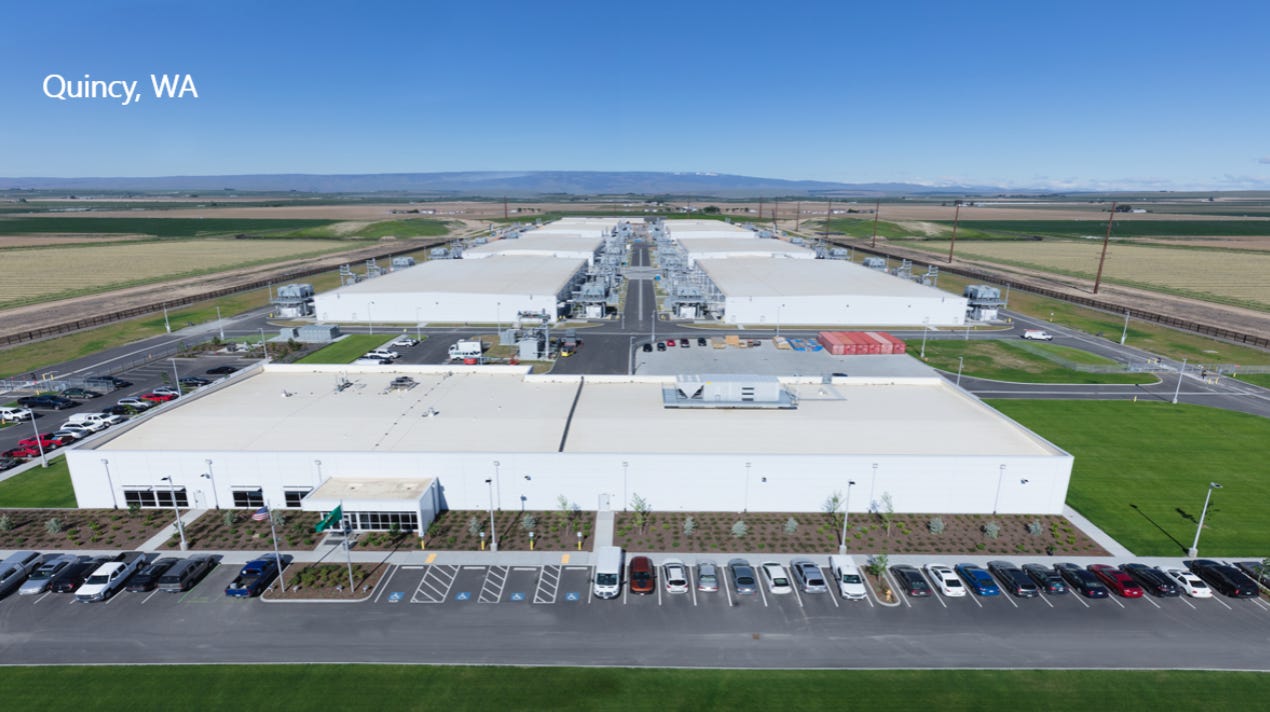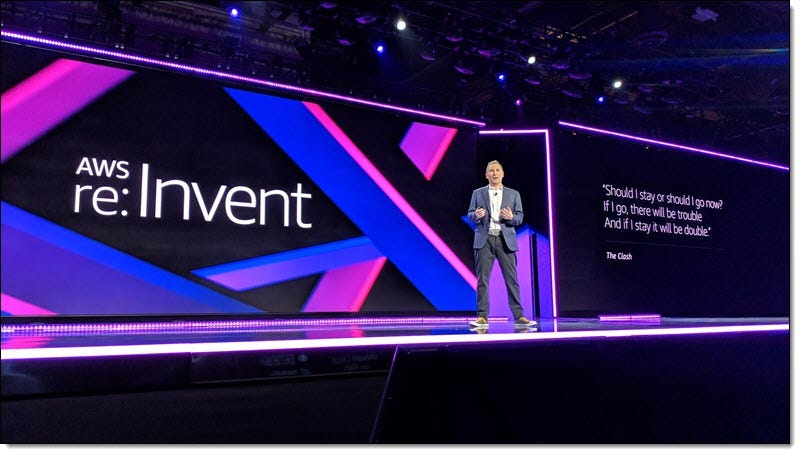Mostly Cloudy: A new source for cloud computing news and views
CLOUD NEWS, RACKED AND STACKED

A Microsoft data center in Quincy, WA, via Azure CTO Mark Russinovich.
After 13 years, there’s still a lot of room left in the cloud.
This fundamental shift in how companies buy and manage the computing resources needed to do business will be a 12-figure business in 2019, according to IDC, but that $210 billion remains a small fraction of the $3.79 trillion that Gartner expects will be spent on information technology services in 2019. Much of that larger number includes communication services and consulting fees, but there’s no doubt that tech companies born on or around the cloud are poised to capture a huge slice of a market previously enjoyed by traditional IT vendors, as large enterprise companies with aging tech infrastructure tiptoe their way into the 21st century.
I’ve long believed this growing community of software developers, systems engineers, product managers, business executives, startup founders, venture capitalists, and — most importantly — enterprise tech buyers has been underserved when it comes to finding readable news and analysis about their livelihoods that is technically sound and marketing resistant.
Welcome to Mostly Cloudy.
I’ve been writing and editing stories about technology for the last 18 (!) years, starting at IDG and continuing at CNET, paidContent, and Gigaom, where I reacquired the enterprise computing bug just as the cloud computing revolution was really starting to take off.
A few twists and turns later, and here we are. At launch, Mostly Cloudy will be a bi-weekly roundup of cloud computing news mixed with original content, analysis, bad jokes, and occasional looks at the rest of the tech world.

Amazon Web Services CEO Andy Jassy speaks at re:Invent 2018.
For the most part, this newsletter will focus on the services sold by the Big Three public cloud providers and the impact cloud computing has had on the practice of software development. Expect to also hear about hardware, open source, enterprise software trends, security, interesting startups, emerging technologies, and maybe even the blockchain on a slow week.
The current plan is to publish on Tuesday afternoons and Saturday mornings, with Tuesday’s edition serving as a quick catch-up for anything you missed to start the week and Saturday’s envisioned as a more expansive view of the current state of affairs.
Mostly Cloudy will be free through the rest of the summer, the least cloudy season of the year in the Pacific Northwest. Starting the Tuesday after Labor Day, subscriptions will cost $10 a month, but I’ll publish a mix of free and subscriber content after the meter starts running.

After decades of experiments, it seems like the best way to deliver quality professional content in the 21st century is to focus on a specific, important topic while retaining control of how that content is distributed. Readers should be customers, not products sold to advertisers, and if enough readers are interested subscriptions allow writers to treat them as such.
Thanks for making it this far down the page! You can subscribe to Mostly Cloudy below, and please tell your friends, enemies, colleagues, and fellow commuters how to find it.
Thanks for reading!
